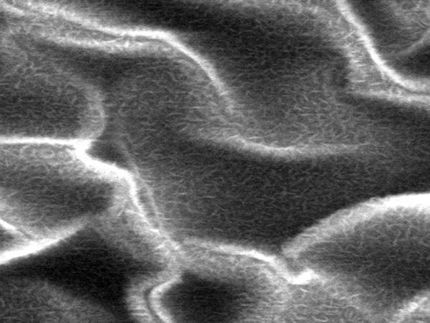Why Antarctic penguins do not freeze
Surface research on penguin feathers as a key to improved de-icing in aerospace
Antarctic penguins are masters in adapting to their environment. One of the most impressive examples of this ability has to date puzzled scientists: penguins dive through freezing cold water and yet they are able to move about on land afterwards in extremely low temperatures of around -40 °C without their feathers freezing.
Our cooperation partner Prof. Pirouz Kavehpour from the Department of Mechanical and Aerospace Engineering of the UCLA and his team carried out research into this property of penguin plumage so essential for their survival. The findings were presented for the first time at the 68th Annual Meeting of the APS Division of Fluid Dynamics in Boston. The team examined the extremely hydrophobic feathers in a special microscopic process and with our instruments for contact angle measurement. The research group discovered that a particular hydrophobic oil from a special gland comes into contact with a nanostructured porous surface. The feathers textured and sealed in this way display an extremely high water contact angle of over 140°. Round drops with a very small contact surface form on the feathers. This results in low heat transfer and makes water drip off quickly, so the water is no longer on the feathers when it freezes.
However, the properties of penguin feathers are not only interesting for animal lovers. The aerospace industry in particular has pricked up its ears at the new possibilities of keeping surfaces clear of ice; a sector where freezing presents a high safety risk and until now has required great effort to prevent. The new findings could advance material development in aircraft construction. “It's a little ironic that a bird that doesn't fly could one day help an airplane fly more safely”, concludes Prof. Kavehpour.
Other news from the department science

Get the chemical industry in your inbox
By submitting this form you agree that LUMITOS AG will send you the newsletter(s) selected above by email. Your data will not be passed on to third parties. Your data will be stored and processed in accordance with our data protection regulations. LUMITOS may contact you by email for the purpose of advertising or market and opinion surveys. You can revoke your consent at any time without giving reasons to LUMITOS AG, Ernst-Augustin-Str. 2, 12489 Berlin, Germany or by e-mail at revoke@lumitos.com with effect for the future. In addition, each email contains a link to unsubscribe from the corresponding newsletter.



























































